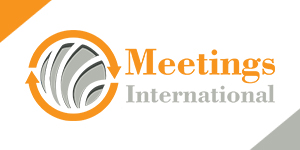Scientfic Sessions:
Cancer biology is the study of how the intracellular network of typical cells is disrupted during carcinogenesis in order to build successful predictive models that can help scientists and clinicians in the validation of new therapies and drugs. Cancer research is to identify causes and develop strategies for prevention, diagnosis, treatment, and cure.
According to Grand View Research's 2020 study, the worldwide head and neck cancer market was valued at USD 2.4 billion in 2019 and is predicted to rise at an 8.9% CAGR from 2020 to 2027. The increased prevalence of head and neck cancer, advances in cancer therapies, and rising healthcare costs are all contributing to the increase.
The worldwide thorax cancer market was estimated at $17.6 billion in 2020, according to Grand View Research, and is predicted to expand at a compound annual growth rate (CAGR) of 12.5% from 2021 to 2028. The increasing frequency of lung cancer, increased need for targeted treatments and immunotherapies, and the discovery of innovative medications and therapy are all driving market expansion.
The worldwide thorax cancer market was estimated at $17.6 billion in 2020, according to Grand View Research, and is predicted to expand at a compound annual growth rate (CAGR) of 12.5% from 2021 to 2028. The increasing frequency of lung cancer, increased need for targeted treatments and immunotherapies, and the discovery of innovative medications and therapy are all driving market expansion.
The global gynecologic oncology market was valued at USD 18.2 billion in 2020 and is expected to reach USD 31.4 billion by 2028, growing at a CAGR of 7.2% during the forecast period.
The global prostate cancer market is expected to grow steadily due to factors such as the increasing prevalence of prostate cancer, rising awareness about the disease, and the introduction of new treatment options.
The market for hematologic malignancies and associated therapies is predicted to rise in the next years as a result of a number of factors, including an elderly society, an increase in the occurrence of certain types of tumours, and advances in medical technology and treatments. Nevertheless, particular market research for 2023 would require access to current market data and analysis.
According to a Market Research Future report published in 2021, the global stem cell transplant market is expected to reach USD 14.5 billion by 2023, with a compound annual growth rate of 9.2% from 2017 to 2023.
The computational oncology market is expected to expand rapidly in 2023, fueled by rising demand for personalised cancer treatment, advances in machine learning and artificial intelligence, and the need for more efficient and cost-effective cancer research.
The worldwide cancer immunotherapy market was estimated at $75.8 billion in 2020 and is predicted to increase at a compound annual growth rate (CAGR) of 9.3% from 2021 to 2028. According to Grand View Research, the worldwide cancer vaccines market was valued at $5.4 billion in 2020 and is predicted to increase at an 11.8% CAGR from 2021 to 2028.
These novel medicines include immunotherapy, targeted therapy, and precision medicine, all of which were created with the objective of reducing collateral harm to healthy tissues while increasing cancer death.
Cancer vaccines are intended to prevent some forms of cancer by giving immunity against the viruses that cause them. The human papillomavirus (HPV) vaccination and the hepatitis B vaccine are the two most often utilised cancer preventative vaccines.

